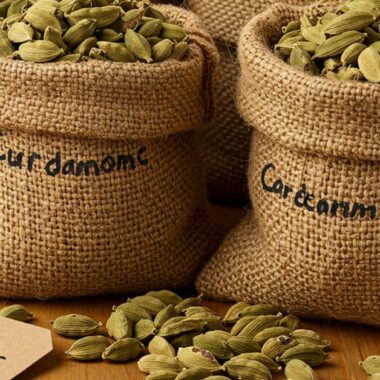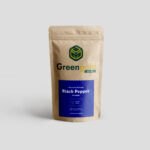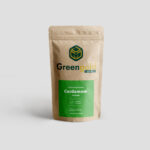Crop rotation and companion planting play a crucial role in maintaining soil health, preventing pests, and boosting cardamom yield naturally. By planting compatible crops and rotating fields wisely, farmers can improve productivity without relying heavily on chemicals. ✅
Here’s a complete guide on how to use crop rotation and companion planting to grow healthier, more sustainable cardamom! 🌱
🔄 1. Why Crop Rotation is Important for Cardamom?
Cardamom is a perennial crop that can be harvested for up to 10-15 years. However, after years of continuous cultivation, soil fertility declines and disease pressure increases.
✅ Benefits of Crop Rotation for Cardamom:
✔️ Prevents soil depletion by alternating nutrient-demanding crops.
✔️ Controls pests and diseases like rhizome rot & nematodes.
✔️ Improves soil structure and moisture retention.
✔️ Reduces the need for chemical fertilizers & pesticides.
💡 Tip: Rotate cardamom with leguminous crops to improve soil nitrogen levels naturally! 🌿
🌾 2. Best Crop Rotation Practices for Cardamom
✅ 2.1 Rotating with Short-Term Crops
Since cardamom is a long-term crop, it’s best to rotate fields every 10-15 years. After uprooting old cardamom plants, grow:
🔹 Legumes (Beans, Peas, or Green Gram) – Improves soil fertility 🌱
🔹 Ginger or Turmeric – Enhances microbial activity 🫚
🔹 Fodder Crops (Napier Grass) – Restores soil structure 🌾
💡 Tip: Avoid planting Solanaceae family crops (tomato, chili, brinjal) after cardamom to prevent soil-borne diseases! 🚫
🌿 3. Best Companion Plants for Cardamom
Companion planting improves soil health, moisture retention, and pest control. Growing the right plants near cardamom can increase yields naturally! ✅
🌳 3.1 Shade-Giving Trees (Essential for Cardamom Growth)
Cardamom thrives under 50-60% filtered shade. The best trees to plant alongside cardamom are:
✔️ Silver Oak (Grevillea robusta) 🌳 – Protects from direct sunlight
✔️ Jackfruit (Artocarpus heterophyllus) 🍈 – Adds organic matter
✔️ Wild Nutmeg (Myristica fragrans) 🌰 – Acts as a wind barrier
💡 Tip: Avoid dense shade trees like Teak or Eucalyptus as they compete for nutrients! 🚫
🌿 3.2 Nitrogen-Fixing Plants (Soil Enrichers)
Leguminous plants fix nitrogen naturally, improving soil health for cardamom. Best options:
✔️ Gliricidia 🌿 – Fast-growing nitrogen fixer
✔️ Pigeon Pea (Tur) 🌱 – Adds organic matter
✔️ Sesbania 🌾 – Enhances soil aeration
💡 Tip: Plant these around cardamom fields or between rows to maintain long-term soil fertility!
🍀 3.3 Pest-Repelling Companion Plants
Growing natural pest deterrents alongside cardamom reduces the need for pesticides. ✅
✔️ Neem (Azadirachta indica) 🌿 – Controls nematodes & insects
✔️ Marigold (Tagetes sp.) 🌼 – Repels soil pests like root grubs
✔️ Lemon Grass (Cymbopogon citratus) 🌱 – Protects against fungal diseases
💡 Tip: Intercropping cardamom with pest-repelling herbs keeps the plantation chemical-free!
🌍 4. Sustainable Farming: Key Takeaways
✔️ Rotate cardamom fields every 10-15 years to prevent soil depletion.
✔️ Grow legumes (beans, pigeon pea) after cardamom to improve nitrogen levels.
✔️ Use shade trees (Silver Oak, Jackfruit) to maintain humidity.
✔️ Plant pest-repelling crops (Neem, Marigold, Lemon Grass) naturally.
✔️ Avoid crops that deplete soil nutrients (Tomatoes, Chili, Brinjal).
🛒 Buy the Best Idukki-Grown Cardamom!
For premium-quality, naturally grown cardamom, check out our store! 🌿✨
👉 Shop Now 🛍️💚
🌟 Conclusion
By using crop rotation and companion planting, farmers can boost cardamom yields, enrich soil health, and reduce pests naturally. Sustainable farming practices lead to better-quality spices and long-term profitability! 🚜🌱












